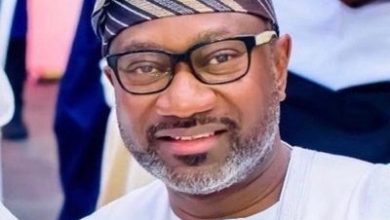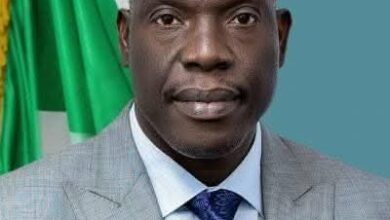FCMB : MOVING IN A CIRCLE.

First City Monument Bank Plc ,FCMB, was a model brand on arrival in 1982 ; when it was established by the banking legend and trailblazer ,Otunba Subomi Balogun , one of its core values was to pursue excellence. A fleet footed corporate organization, it was nurtured to make a difference with superior service delivery and impressive financial performance from its inception .But today , it is a different ball game .The bank with stunted steps , cyclical profitability and lethargic speed , has been overtaken by younger ones miles away. This, no doubt , is raising serious concerns and questions .
THE HOPE CRASHING YEARS
Practically all other performance metrics looked up in the first half 2014 year ; the year was already marked bright . At the end of 2014,.its profit after tax was N22.1 billion. This impressive result resuscitated hope of its stakeholders.
The bank announced a return to dividend payment in 2013 after seeing profits expanded to an appropriate level to allow for it.
At a time in the first half of 2014 it traded at a price of NGN3.38. And with NGN0.30kobodividend declared at the end of the 2013 financial year that implied a yield of 9%. That was considered encouraging by a financial firm in its analysis.
But its fortunes backtracked dramatically after the 2014 financial year . Slow growing gross earnings and hefty provisioning due to the past profligacy coalesced into big drops in profits between 2015 and 2019 .A look into its books could be very revealing. Burden of nonperforming loans , high level of impairments and outrageous cost to income ratio were its drawbacks. The consequences of its inability to rise to the above challenges were stunted steps in its corporate journey ; falling margins ,high level of non cash earnings ,unstable dividend track records and declining market share.
GROSS EARNINGS
The implications are not hidden , the management ended up destroying values it promises to add in transit as the earnings were consumed before reaching the bottom line. Even between 2015 and 2019 the change or increase was less dramatic. The bank found it difficult to exploit the swath of opportunities caving in to competitive and environmental pressures.
The gross earnings, a metric indicating how it exploited opportunities around it ,also followed similar zigzag patterns. In 2014 and 2015 its gross earnings in absolute term stepped down from N148.6 billions to N147.7 billions .But its profit dipped embarrassingly as indicated above The highest gross earnings stood at N171.7 billions in 2016. Its gross earning increased to 98billion in the first half of 2020 from N89 .8 billions in the corresponding period of 2019 , The real concern is not only what it got but what it got out of it .
.
ASSET QUALITY
For a long time the bank has been battling with burden of its nonperforming loans which had piled up . In September 2019 alone , it made a N7.8 billion provision as its impaired loans for the financial year ; in September, 2018,it was N14.6 billions. Since 2016 , the bank recorded N71.9 billions as its total impaired loans in September 2019 with N35.7 billions in 2016 alone. Asides ,the pains of impairments charges , inability to control costs is another Achilles heel of FCMB. Its cost to income was 75.4 percent by September, 2019 caused by its outrageous overheads .
PROFITABILITY
Since 2014 financial year it has been a rollercoaster of unimpressive performance year after year .And the bank has never come close to that performance.
In 2015, its PAT crashed to N3.5 billions and N6.8 in 2017 .The highest recorded was last year when the bank hit N13.6 billions. Its profit stood at N12.1 billions in 2016 and N12.4 billions in 2018.
Between 2019 and the first half of 2020 , the management of FCMB is not folding its arms. However, the notorious drawbacks are still very much in control. The bank may need to fight against impairment and its cost to income ratio which remains very outrageous. Its impairment rose again from N5.5 billions in the half year 2019 to N7.74 billions in the 2020 half year period ; its cost to income improved from 73% in 2019 to 71 percent in 2020 half year .This is still very embarrassingly high . In fact , CBN put this figure at 87 % in 2019 half year calculation .The bank with the best cost to income in 2019 half year period stood at 37.63 % while the worst at the same period was 86.29 % .Moreover ,its impairment to loan ratio was 0.89 percent better only to that of First Bank Nigeria Holdings among the 13 listed banks on Nigeria Stock Exchange . This has continued to suppress its profit margins. Its pre tax margin in the first half was 9.4 % in 2020 down from 9.82 % in 2019 while its net profit was N9.76 billions translating to EPS of 49k .on year on year basis .
INVESTOR RATIO
This dragged down its Return on Average Equity ,ROAE . In September, 2019 its ROAE stood at 5.8 percent when some banks registered double digit with that metric .The above uninspiring run continued to suppress both pre tax and post tax margins which are indicators pointing to how well a company manages its financial resources.
For its impact, its pre tax between June and September2019 crashed by 13.3 percent. Although the bank blamed this on its exceptional items this may not beunconnected to how the management deployed its resources . “Our year on year growth has faced a few setbacks due to the non recurrence of exceptional gains from foreign exchange income, regulatory induced fee reductions in the pension business and a continued lull in the capital market”, the bank noted .
Some analysts, however, disputed the bank’s claim. According to them ,“as a group , the same struggles were noticed” .The ROAE for the group commercial and retail banking was 7.5 % ; for investment banking, 3.2 % .It was only that of Wealth Management group that stood at 24 %..The travails of this bank hit hard its shareholders.For the shareholders of this 2014 was a turning point
But since that 2014 performance, shareholders have been confronted with the risks of unstable dividend records and high level of non cash earnings . In terms of dividends and capital gains, it has not been a fair experience. In 2014 , a dividend of 25k was declared by the bank per share of 50k . However,the subsequent ones nosedived in response to its plummeting fortunes . A meager 10k was given out between 2015 and 2017.In 2018 and 2019 financial years it was 14k apiece.Its ROE was 9.1 percent against the banking industry 12.3 percent .This is considered to be low by analysts. The same thing with its ROA of 1.0 x against the industry 1.1 x .
Presently , its price earnings ratio is 2.4x as against the market 6.4x and industry 3.4x .; its price to book ratio is 0.2x compared to the banking industry 0.4x The bank’s return on capital employed last year and three years ago was nil .
As at June ,2020 its debt equity ratio 190.2 percent standing at N407,995b as against N214,451b equity .Between 2014 and 2019 its debt to equity ratios were 90.3 %, 122% ,128.3 % , 110.4 % , 120.6 % , and 141.4 % respectively. This scenario showed why its cost to income ratios remain among the worst . This was in spite of the fact that it retained its earnings heavily against the interest of dividends investors without generating commensurable profits or returns. The bank’s dividend yields were 9.3 %, 14.2 %, 10.8 % , and 7.5 % between 2014 and 2017 . It was 7.2% and 7.5 % in 2018 and March ,2020 . This was relative to its Earnings Per Share ,EPS, of N1.118 , 240k ,724k , 434k ,752k ,872k and 945k respectively between 2014 and 2020 March .This ,according to some analysts, was too cold for comfort .
.
IINVESTORS’ FIGHTING BACK
But the bank too has its own portion as these investors were not folding their arms . In H1 17 results justified two key reasons why investors were lukewarm towards the stock. First, EPS of N0.15 is down 81% YoY largely on the back of a weighty decline in non-interest income (-50% YoY). In addition to this, the bank faced sizable funding cost pressure (interest expense: +24% YoY) in the review At the end of the week before December 9,2019 , investors who had waited for the bank’s nine months quarterly results reportedly struck; the bank ended the week as one of the worst losers. Its share lost 9.45 percent of value . The investors were allegedly irked by a N7.8 billion impairment charge by the bank .Its share price was down by 29 percent between September 2018 and September 2019 ; it crashed 48 percent from its 2018 high of N3.51k as at September 2019 .
The trouble started in September 2015 when the bank recorded a N6.4 billions negative quarterly basis. For that year alone its impairment charges stood at N14.4 billions. Following the bank’s unimpressive performance in 2015 its investors started fighting back .As at early 2016, their anger became clearer .1ts share price dropped massively by 57 percent by February 2016 and by over 75 percent in relation to its high of N4 in 2015 . By February, 2016 its share traded at 89k .At that 89k in that February the bank traded 43 percent to its book value or at a massive discount of 43 percent to its net worth .
STRATEGIC CHOICES
Some analysts blamed the leadershipof the bank for certain strategic directions and choices . Accusing fingers are being pointed to the desire of the founder to put his son in charge of the bank .For them, the corporate world is littered with carcasses of companies or businesses led or run by family sentiments. This may not be misplaced .Recently , Diamond Bank Plc led by the son of its founder was acquired by Access Bank on the throes of death. This is a typical example and a perspective from which some analysts are castigating the idea of allowing the son to take over the bank .
However, to some people, , what is wrong about putting a competent son to lead a family business? .Ladi Balogun ,the former Managing Director of the bank, now Chief Executive Officer of the Group , is a seasoned economist and Harvard trained. “The best way to judge the management of FCMB, according to them , is by its decisions and its results over time” ,some analysts noted .
But if the decision of the founder to make his son the general overseer of his business was thrown into the dustbin , the idea of the acquisition of FinBank Plc in February 2012 and subsequent merger with FinBank in October 2012was another strategic blunder believed to be hunting and hurting the destiny of this bank .
Earlier in 2007 ,FCMB had acquired Cooperative Development Bank, Midas Bank and Nigerian American Bank. The above banks were not in good shape when they were acquired. . According to some analysts , there is no big deal in acquisitions and mergers as a strategic method when the acquiring bank or firm has the core competencies to exploit the synergies and add values . But the only issue is that the post merger health and welfare of FCMB has failed to justify the essence of the strategic decisions. This has continued to raise a question. Why should a bank that is not adept at controlling risks venture into acquiring a distressed bank like Finbank? ,some analysts queried.
The same thing could be said about its holdings company logic . In June 2013, FCMB assumed a holding structure in accordance with the regulations set by the Central bank of Nigeria. The group restructuring which ensued, resulted in FCMB Group Plc becoming the holding company for FCMB Ltd and its subsidiaries.
Moreover, some believed its new structure as a holding company is not abnormal but the management ability to generate synergy as a corporate parent depends on its competencies on the portfolios of its choice. .This too, has called to question the team’s strategic capabilities. In the industry , banks have decided to grow organically and all have overtaken FCMB .Those strategic directions and methods were not unusual . The above initiatives were definitely to grow its market share and add values but not much has been achieved. .But they have failed to add much values expected .
FCMB’S STRATEGIC DIRECTIONS
In this industry ,,the markets , products and margins as well as the attendant risks determine the prospects of individual banks .However, each player’s strategic choices must be driven by its strategic capabilities that deliver competitive advantages to itAnalysis of the bank’s books in the last five years revealed that while the operating environment has been highly deleterious, the management of this bank is equally unrelenting trying to reinvent itself for robust performance. But how far has FCMB added values and meet the needs of its stakeholders? What are the core competencies driving FCMB ,? , what are its challenges ,where are its competitive advantages and the prospects of this bank ? .These are the questions whose answers are necessary to unveil its present values and future prospects.
.A look into a bank business segments and portfolios sheds light on the challenges in the industry and the bank’s strategic directions and competence .A key element in delineating between markets is the risk No bank ignores any market. However, some play more in one market and tend to be more visible in another. One thing that cannot be disputed is that risk ,margins and prospects of each market or product must be weighed along the competences and resources of the player ; what a bank makes from each segment defines its competence.
For FCMB, personal or retail banking dominated its income streams drivers and contributed the biggest between 2014 and 2019 .This was closely followed by the Small and Medium Enterprises, SME.
Personal or retail banking is where more incomes were realized. This may not be farfetched. “People withdraw severally and forfeit their interests. It is just like a free money . For this segment funds come in at little or no cost” , a former bank manager explained. The corporate segment took the third position but a difficult terrain in term of contributions to the bank’s revenues . Bigger proportion of its loan impairments came from this terrain to its operations .. Big banks are usually the familiar players here because the can lend so much and absorb the risk . More so, because they have the critical mass
; a bank like FCMB may not pull the weight here. Corporate loans remain the significant part of most of the banking industry income for a longtime, given the overdependence on bank loan by most of institutions.To play in the corporate segment a bank is expected to possess iron teeth to be able to break the metaphorical hard nut particularly with oil price volatility and weak economic indices that keep on weakening credit quality.
.Its investment banking was weak and simply on the sideline .This was due to the general lull in the capital markets .Investment banking is where this bank is expected to have an edge because of its background and expertise in merchants and investment banking but the level of activities in this market has been less impressive.
The lull in the capital market might a factor holding it down here and hindering its prospects of making big money .
The same thing is applicable to institutional banking .As for treasury and financial segment ,this depends on the rates and the liquidity position of the bank . A bank with much cash to play around with is usually a top player here . The above factors and circumstances boxed it to the retails ,commercial and SME segments .
The dominance of SME and Personal banking segment vividly manifested in its strategic directions as the bank’s exploits in the digital banking remains its silver lining in terms of products and markets .This has become its familiar telltale though it is facing stiff competition from Fintech. This initiative has helped it to improve commissions from the mobile and USSD banking. Its digital loans ,according to a report, increased to 219.5 m monthly while commissions increased to N717 m , or 87 percent on monthly and average basis. According to that report of December 2019 its digital customers were up by 69 percent year on year basis to N4.1 millions . The fear enveloping its foray in to digital banking is that a bank ,now acquired by a bigger bank , depended on this segment heavily too when faced with similar circumstances of non performing loans and outrageous cost to income ratio . The question remains, how reliable will the income from it be with other banks coming into it with better strategy and competence.?The retail and SME markets are growth markets which if managed well could yield good margins and high prospects. Also known as consumer market, if it is played well ,analysis say , this is where you can get margin
.
STRATEGIC ACTIONS AND QUALITY OF EARNINGS
For its status as a tier 2 bank , FCMB’s total assets is huge enough. The bank’s total assets zoomed from N1.169 trillion in 2014 to N1.621 trillion in 2019. The question remains, why were the bottom lines crashing while the top lines were increasing albeit incrementally? Moreover, when the total assets before the bank took an upward trend. From N1.169 trillion in 2014 it climbed to N1.621 trillion in 2019 . By its half year 2020 results, its total assets stood at N1.97 trillion .The answer is not far to seek. A possession of resources does not guarantee strategic success. Strategic capability is essentially concerned with how these resources are deployed, managed and controlled and in the case of people, motivated.
Usually , loans to customers form the bulk of any bank assets. and have always been growing and will continue to grow as long as the economy is growing.Moreover, with the CBN loan to deposit ratio of 65 percent . Since the core business of banking is lending , no bank jokes with it .However, by their fruits you shall know the pedigree of every bank When it is said that one is a good or an astute banker what in fact is meant is that one is a shrewd lender , one who lends safely and profitably .
Between 2015 and 2019 , the FCMB’s loans to customers stood betweenN592.7 billions and N692.4 billions on yearly basis .As at june this year the loans hit N794 billions from N715 billions the same period last year ..Naturally, a racy assets figure should result in more robust earnings except may be the spreads or the difference between interest earned and interest paid are not quite attractive. FCMB’s net interest margin has not been extraordinary and this means the bank has to improve the spreads in spite of the prevailing low yield environment . The regulatory authorities policies on interest rates play a decisive roles on returns from the core banking or maturity transformation business. .For instance between 2015 and 2019, due to either high interest expenses or falling interest income it has been difficult for it to maintain impressive returns on earning assets .In the 2019 financial year its interest income slumped by 1.9 percent while its interest expenses rose by 1.4 percent and the net interest income fell by 4.4 percent Also, its net interest income and non interest revenue for the half year 2017 crashed by 11 percent and 30.3 percent respectively compared to the corresponding period in 2016 . Although there were slight decline in the operating expenses by 3percent ,this could not save its pre tax profit as it crashed outrageously by 77 percent .
.
A bank that doesn’t have competitive advantage in the core banking is always expected to close this gap in fee and commissions. However , because commissions on non interest dependent transactions were not that superb , and the overheads were shooting upward carelessly ,the bottom lines too were endangered.. In the same 2019, fee and commission income equally declined by 4.8 percent . The above two scenarios together with the burden of non performing loans led to its inability to lend profitably and safely and call to question the strategic capabilities of the team at the driver seat of FCMB .The survival and success of any organisation are, no doubt, influenced by its ability to respond to the competing pressures.. . The major challenge is the country economic problems have continued to weaken the baking sector credit portfolios and the bank is yet to sport iron teeth to break the hard nut to get impressive spreads between interests it paid and the returns it received. Even incomes from its non interest transactions that is expected to be a stabilizing factor has equally not lived up to that expectations.What could have saved this bank could have been its ability to rev its gross earnings disproportionately but this also fell below expectation . ; its gross earnings were lethargic.
Meanwhile as the asset quality of the bank is improving and non performing loans peter out , the bank is expected to gather more strength for a better performance The balance sheet mending efforts have recorded relative successes, especially in a harsh economic environment. The bank’s capital adequacy ratios are 17.9% higher than the regulatory required 15%. Liquidity ratio is also at 39.8% and the loan to deposit ratio at 73.9% (CBN loan to funding ratio is 57.36%). Its romance with the digital banking is believed to be yielding results. In the first half of 2020 , its non interest income segment delivered N15,301 billions. Its deposits to customers also moved up speedily yoN1.109 trillion from N822 billions in the corresponding period of June 2019 .Moreover., its non performing is among the industry best at 3.5 percent in the first half of 2020




